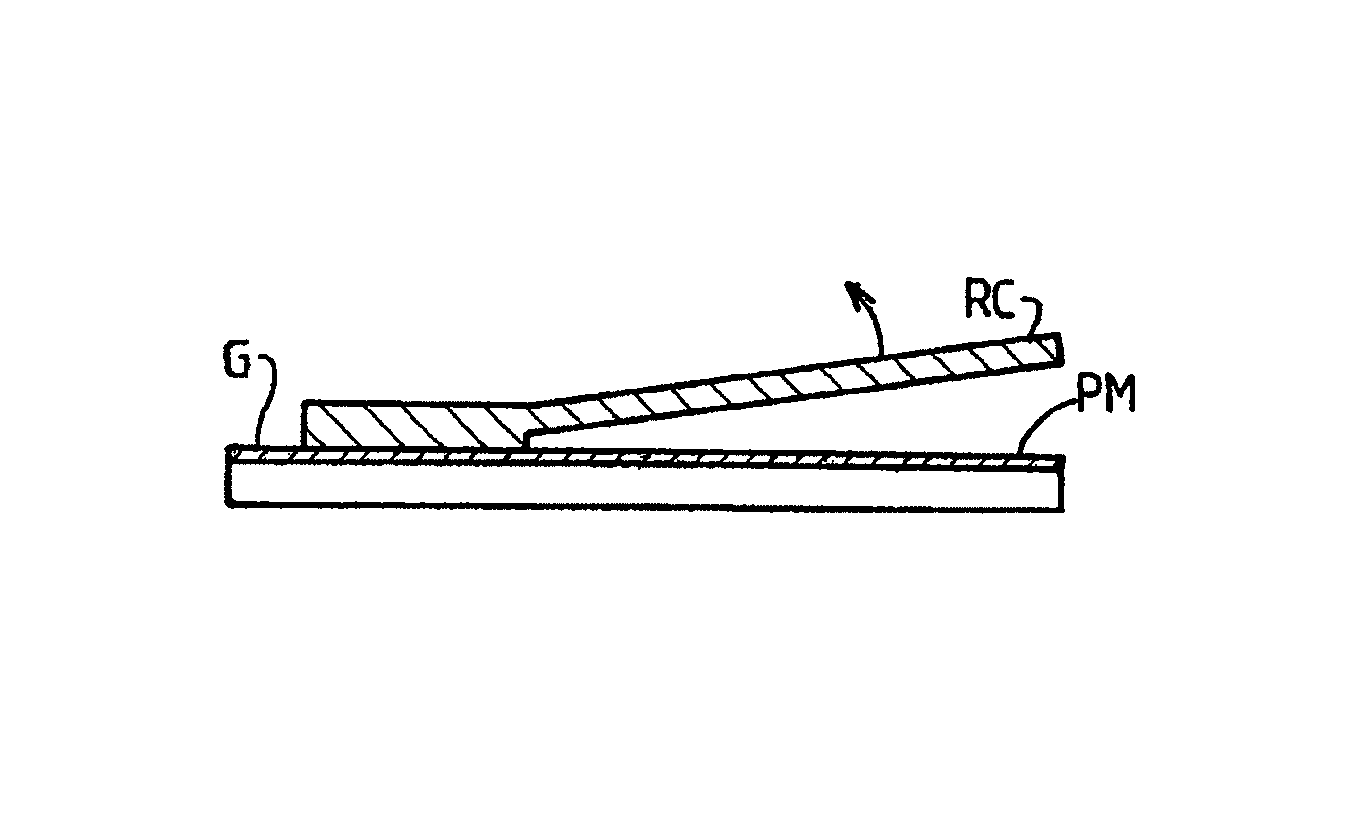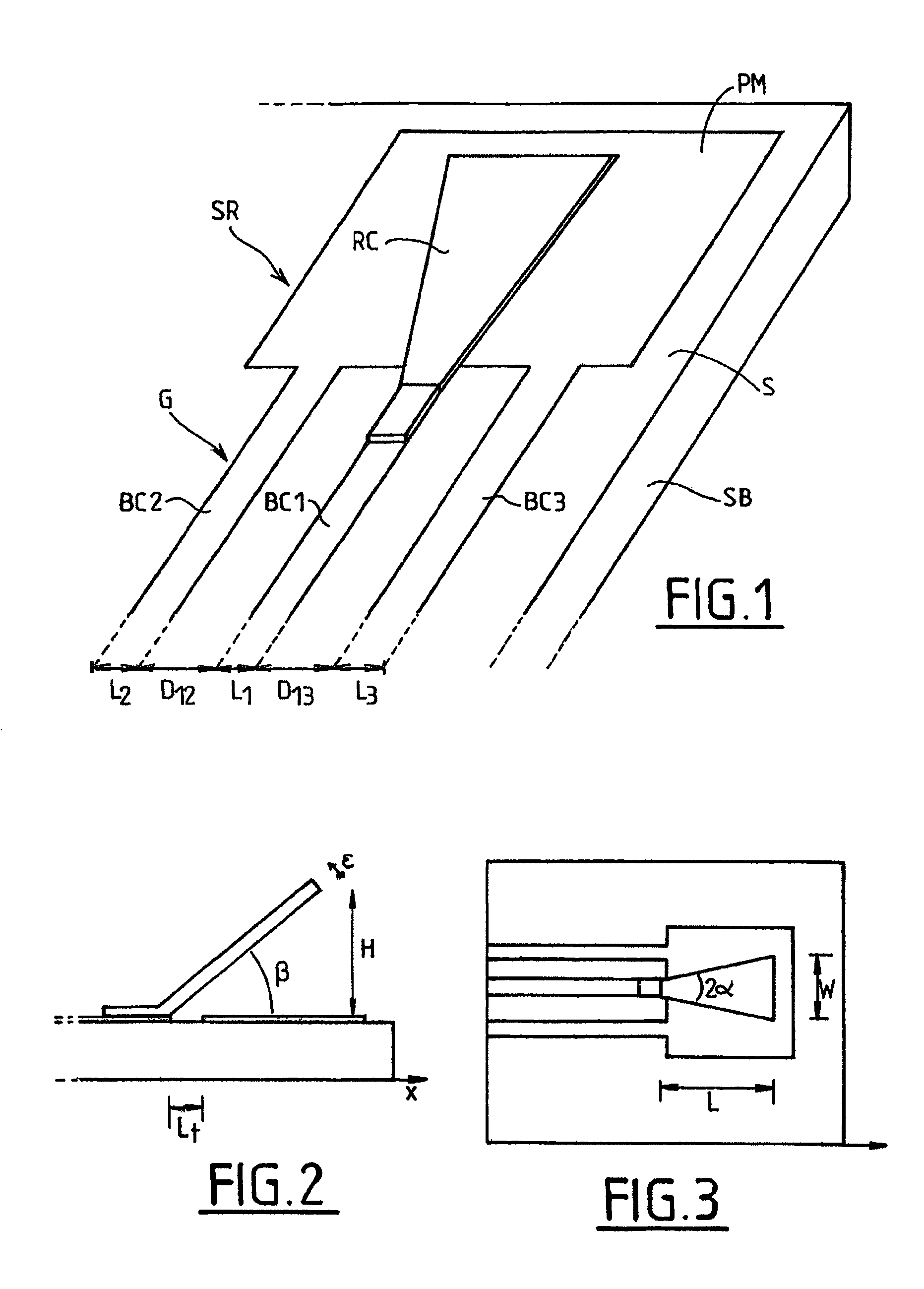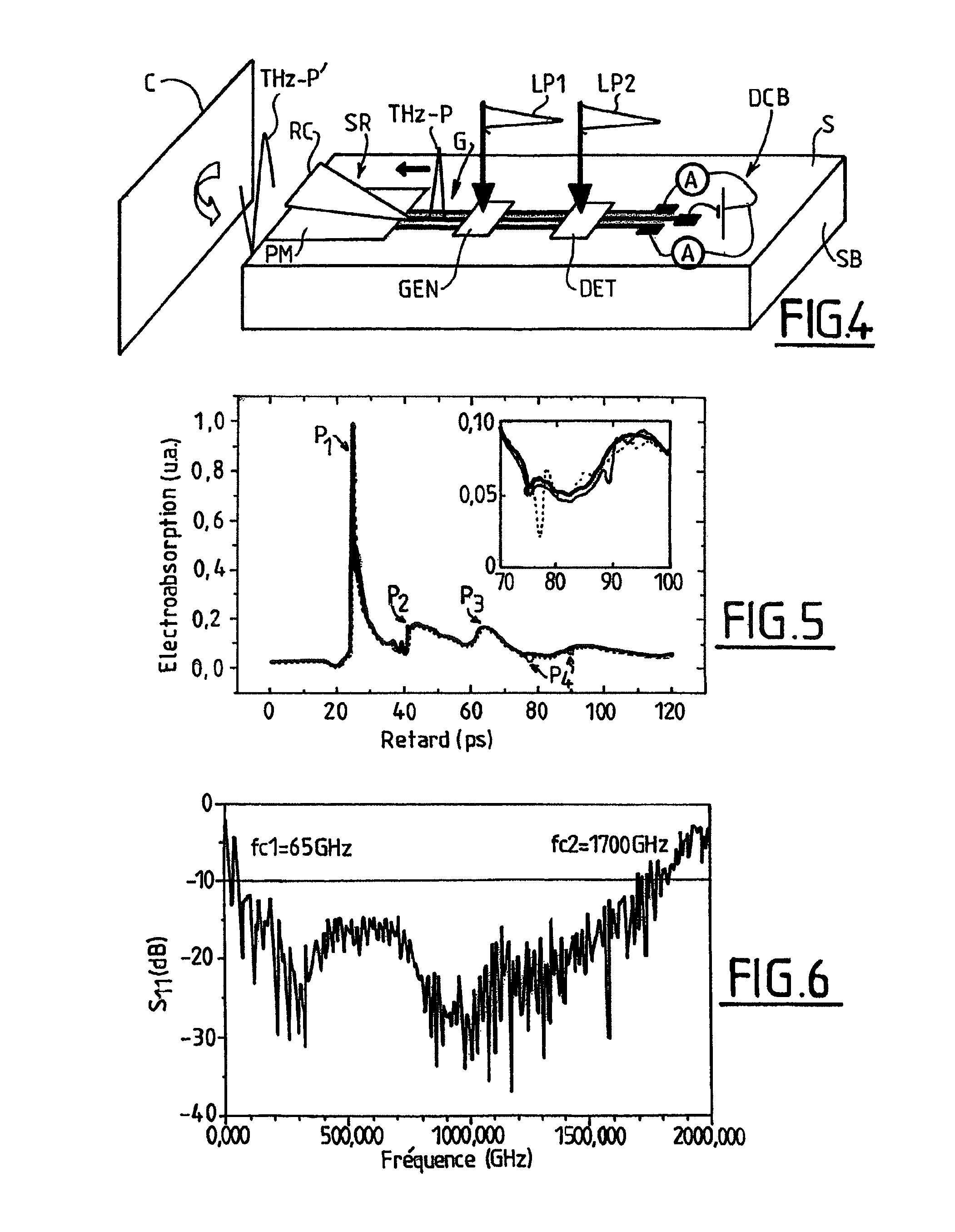Integrated terahertz antenna and transmitter and/or receiver, and a method of fabricating them
a technology of integrated terahertz and transmitters, applied in the direction of optical radiation measurement, instruments, spectrophotometry/monochromators, etc., can solve the problems of poor efficiency, difficult and expensive silicon lens positioning, and large amount of silicon, so as to achieve easy and inexpensive fabrication, the effect of little dispersion
- Summary
- Abstract
- Description
- Claims
- Application Information
AI Technical Summary
Benefits of technology
Problems solved by technology
Method used
Image
Examples
Embodiment Construction
[0047]Whereas the integrated antennas that operate in the terahertz range and that are known in the prior art are mainly of the planar type, the invention relates to a three-dimensional antenna made on an insulating or semiconductor substrate using standard photolithographic techniques. More precisely, the antenna is of the transverse electromagnetic wave horn type, i.e. it is constituted by a flared waveguide made up of two superposed conductive sheets separated by an angle β.
[0048]In the embodiment shown in FIGS. 1 to 3, the two conductive sheets constituting the transverse electromagnetic wave horn comprise a ground plane PM deposited on a surface S of an insulating or semiconductor substrate SB, and a conductive ribbon RC extending above said ground plane and forming an angle β therewith. The ribbon RC is substantially plane and of triangular shape with an angle at the apex of 2α. The ground plane PM and the ribbon RC form a waveguide of impedance that is constant along the long...
PUM
 Login to View More
Login to View More Abstract
Description
Claims
Application Information
 Login to View More
Login to View More - R&D
- Intellectual Property
- Life Sciences
- Materials
- Tech Scout
- Unparalleled Data Quality
- Higher Quality Content
- 60% Fewer Hallucinations
Browse by: Latest US Patents, China's latest patents, Technical Efficacy Thesaurus, Application Domain, Technology Topic, Popular Technical Reports.
© 2025 PatSnap. All rights reserved.Legal|Privacy policy|Modern Slavery Act Transparency Statement|Sitemap|About US| Contact US: help@patsnap.com



